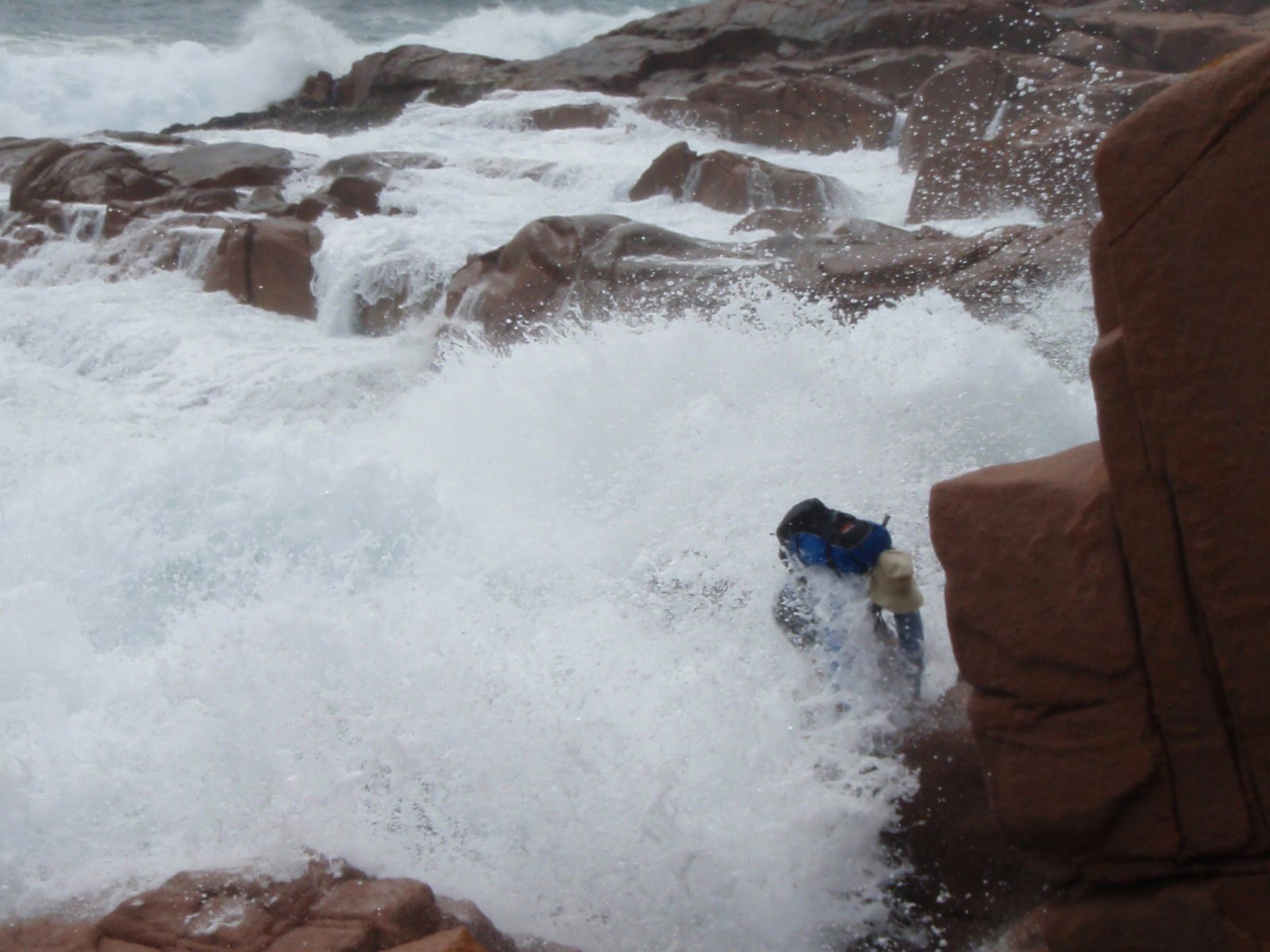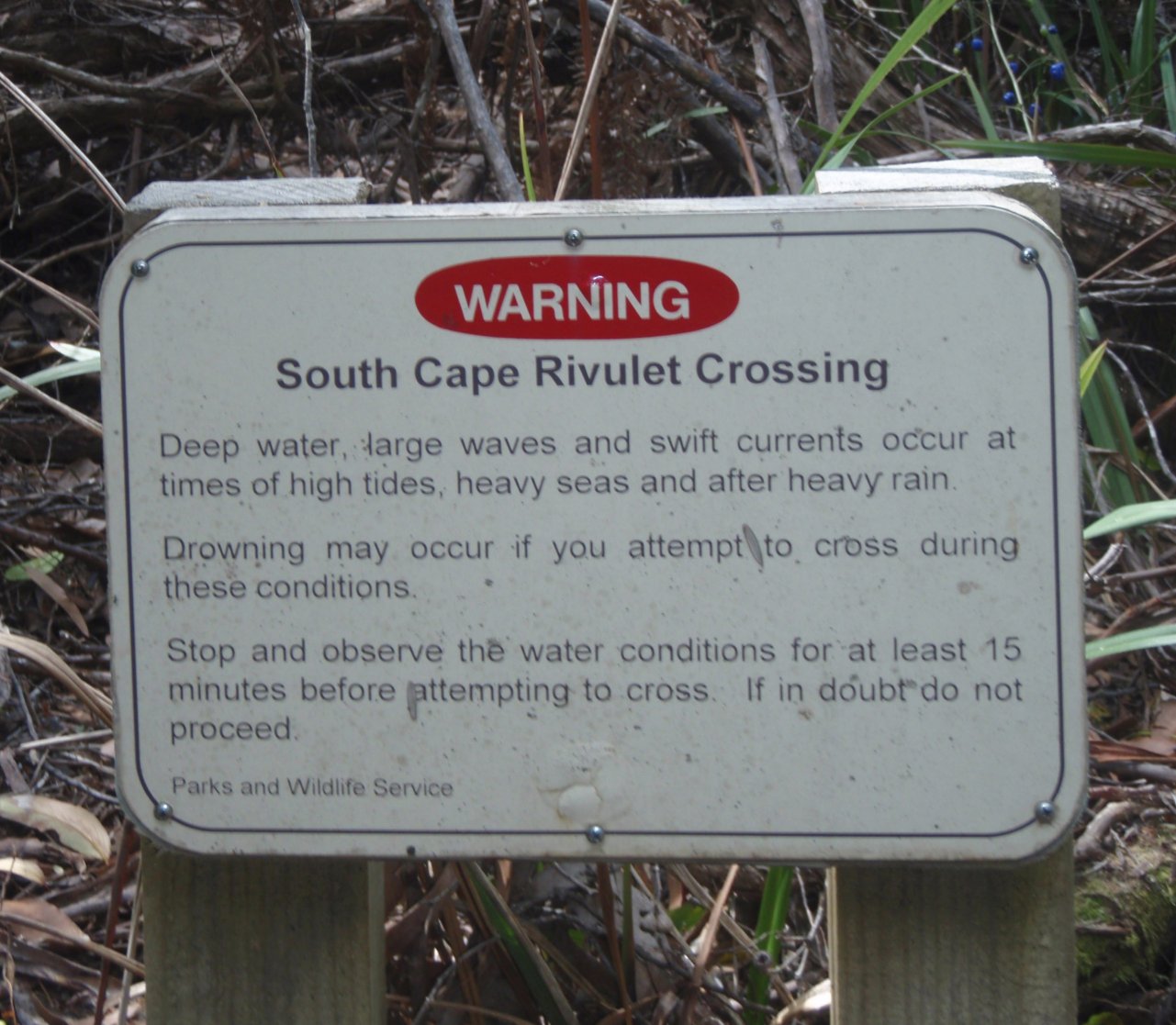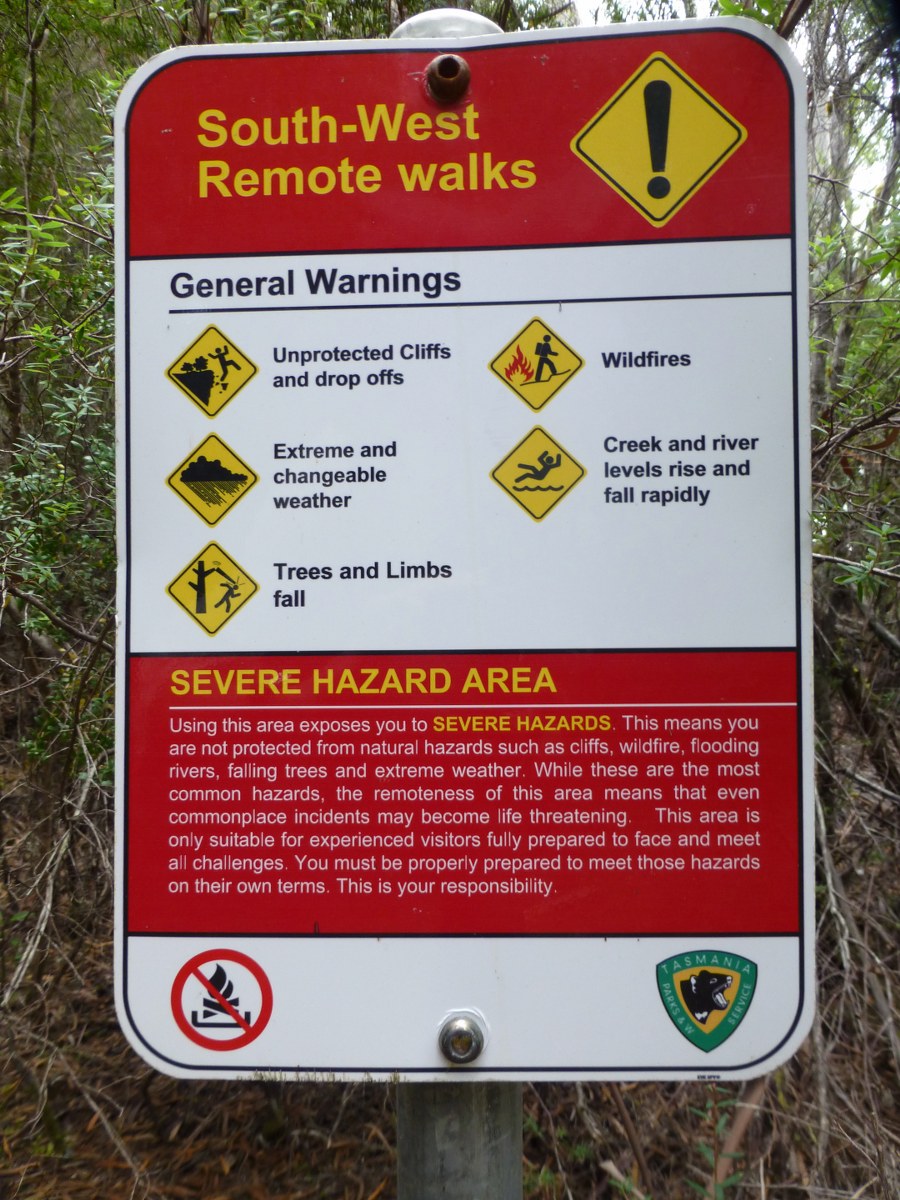Reading Time: 8 minutes
Whatever approach to safety is adopted the purpose must always be to take reasonable steps to prevent harm, particularly serious harm.
Groups and individuals should carefully consider and decide how they will effectively manage safety on their trips.
Safety can and should be managed or optimised:
- During planning and preparation before the trip
- During a trip, including travel to and from a location
- In the event of an emergency, which might involve outside assistance or evacuation.
Safety before the trip
Safety begins with careful and thorough trip planning and preparation.
A well planned trip will include:
Route: A carefully considered route; taking into account
-
- The people who will be undertaking the trip.
- Information from:
- Guidebooks
- Land management staff (e.g. rangers)
- Websites
- Local information
- Bushwalkers who have done the trip.
- Track conditions and terrain
- Time of year; expected and possible weather conditions
Capabilities. Ensuring the trip is within the capabilities of every member of the group, taking into account: skills, experience, fitness and equipment.
-
- A trip with children, or beginners, or for training, will require particularly careful planning to ensure that the trip is easily managed by the group.
- On the other hand, an experienced group planning a challenging trip to a remote area involving hazardous terrain, or a solo trip, for example, will also require detailed planning, but with a different focus.
Preparation. Ensuring that each group member is well prepared; fitness, gear, clothing, special equipment, first aid skills and kits.
Weather. Monitoring the weather and forecasts up to and during the trip.
Trip contact. Appointment of a suitable trip emergency contact.
Trip intentions. Complete a trip intentions form.
Emergency communications. Ensuring that an emergency communications device appropriate for the trip is carried.
Safety during the trip
Trip leaders and experienced members of a group must be alert for, recognise and monitor risks during a bushwalk and respond accordingly to ensure safety.
This is also referred to as dynamic risk assessment and involves taking appropriate measures to anticipate and control issues (something that IS happening) and risks (something that MIGHT happen) that may cause harm.
Leaders and experienced members should actively monitor the group, the terrain, the weather, and progress against the trip plan.
Examples of some safety issues that could arise during trips, with some possible response options include*:
*Note: the following scenarios are general; not definitive. Responses will vary according to the specific circumstances.
Storm event impending
- Halt, bring the group together
- Check weather forecast, warnings and weather radar if communications are available
- Modify the route to avoid exposed terrain and/or river crossings
- Seek more sheltered campsite, while avoiding locations with tree fall risk
- Undertake a river crossing now to camp on the far bank
Group progressing slower than expected
- Halt, bring the group together
- Determine causes. e.g. difficult terrain, fatigue, blisters, morale
- Have more rest stops
- Camp earlier
- Modify the route to make it easier
- Abandon a coastal traverse if the tide will now be incoming
Hot afternoon pending, limited drinking water
- Treat this issue as very serious
- Halt, bring group together and assess situation
- Confirm location of nearest drinking water supply
- Seek shade, ration water and rest
- Consider waiting until the cool of the evening to move on, or retreat
- Monitor all group members for heat exhaustion and heat stress
- Change or retrace route to get to known water source
Sick or injured group member
- Halt in the most sheltered location available.
- Identify the nature of the illness or injury
- Provide first aid
- Bring the group together and ensure their well being
- Make an emergency call for advice or rescue, sooner rather than later
Steep and icy conditions on ski tour
- Halt and bring the group together in a safe location
- Observe snow conditions, slope angle, temperature
- Consider the capabilities of all group members with respect to conditions and terrain
- Seek a less hazardous alternate route (e.g. lower angle traverse) or retreat
Smoke from bushfire observed
- Halt, bring the group together
- Assess the location of the fire and wind direction
- Obtain fire location and any warnings (e.g. state emergency app or website, phone call or SMS)
- Advise emergency services of your location and intentions and seek their advice
- Revise plans – move to safest nearby location or use a low hazard route such as a wide road to exit area
- Abandon the trip
Response to an accident or other emergency
Note. Summary information is provided below, see Emergencies for detailed information.
In the event of an incident:
- Leader delegates roles and tasks to other experienced members. Avoids trying to do everything alone.
- Attend to injured person. Ensure any person at risk, ill or injured is safe.
- Provide first aid. Follow the standard protocols.
- Ensure other group members are safe. Bring them together.
- Move to the most sheltered location nearby. Put up tents/shelter for warmth or shade.
- Get a stove going. Make a hot drink in cooler weather.
- Assess the situation. Collect all information available.
- Allow time to think. “Hasten slowly”.
- Keep notes. Consult other experienced members.
- Contact emergency services. Call for help sooner rather than later.
- Change the trip plan. Be prepared to makes changes if required.
Building experience
An emergency situation or safety issue can arise on any trip, including an easy day walk. However, more remote and challenging bushwalks and ski trips will have a greater range and greater possibility of potential safety issues arising.
For the individual or group wishing to undertake more demanding, challenging and remote area trips, experience must be progressively gained in order to develop the fitness, skills, knowledge, confidence and judgement needed for harder trips to be completed safely.
Some factors that affect trip difficulty include:
- Long duration – multiple days with heavier packs
- More hours walking per day
- Demanding terrain – such as bigger climbs and harder off track stages
- Challenging weather
Gradually increasing the difficulty and challenge of trips undertaken develops the wisdom of experience necessary for safety in the bush.
Individuals can also seek other walking companions to get additional and varied experience.
One effective way to progressively develop bushwalking skills is to join a bushwalking club.
Walking with a bushwalking club
Bushwalking clubs are not all the same – they offer different types and locations of trips. It is worth looking around when considering joining a club.
Bushwalking clubs generally have policies, processes and practices to ensure enjoyable and safe trips for their members. These typically include:
- Carefully planned walks programs
- Collective “local knowledge” of walking routes and areas from previous trips
- Well described trips. Some clubs use a trip grading system. Advice is readily available for intending participants to ensure that a decision to join the trip is an informed one.
- Trip leaders with appropriate skills and experience
- Support for new leaders through formal and informal mentoring
- Members generally know each other well and are familiar with each other’s skills, experience and fitness
- Trip leaders provide oversight to check that intending participants have adequate skills and experience for a trip, especially on more challenging trips
- Good depth of experience across the participants on a trip
- Beginner trips
- Club Committees provide oversight including trip reviews, near misses, trip and incident reports etc
- Members share experiences of near misses, tough conditions, hazards, gear selection, etc
- Insurance. Many clubs participate in the personal accident insurance scheme arranged by Bushwalking Australia.
Clubs and state peak bodies may provide or support training in specific skills such as navigation, leadership and first aid.
While bushwalking clubs provide a supportive and safe environment for bushwalking, individuals remain responsible for their own safety and wellbeing commensurate with their age and level of experience.
Note: Bushwalking clubs are community based recreational organisations. Clubs do not provide a “service” to take people bushwalking – that is the domain of commercial tour operators.
Children on bushwalking club trips – WWC checks
These notes are general in nature. Bushwalking Clubs should obtain current expert advice on the state’s child protection legislation and Working with Children (WWC) requirements.
Any sporting organisation, including a bushwalking club, that provides activities for children (i.e. under 18yo) is required by the child protection legislation in each state to implement policies and procedures to protect children from harm.
Clubs are required to ensure their governance and leadership, codes of conduct, human resource practices, reporting, risk management and mitigation reflect a commitment to and an understanding of child safety and the requirements of the legislation.
If children only participate in Club trips when accompanied by a parent, or an adult nominated by a parent as the guardian, then they are responsible for the child’s well-being. However it may be advisable for the Club’s trip leaders to have Working with Children Checks anyway. It may also be advisable for Club Committee members to have Working with Children Checks.
State information:
- Working With Children Check New South Wales
- Working or volunteering with children | Your rights, crime and the law Queensland
- Create a child safe environment South Australia
- Do I need to register to work with vulnerable people? Tasmania
- Working with Children Check Victoria
- Working with Children Check Western Australia
Compliance
Bushwalkers may be required to comply with a range of regulations including campfire and National Park regulations and trip permit conditions. Clubs and community groups may have to comply with Working with Children legislation.
It is important to note that meeting compliance requirements does not ensure safety on bushwalking trips.
Understanding safety: preventing harm
Acknowledgement:
Dr Andrew Brookes, Adjunct Associate Professor, La Trobe University
Safety is taking all reasonable steps to prevent harm, particularly serious harm.
For trips with children or beginners, for example, it is better to routinely adopt available prevention measures, than to continually weigh the inconvenience of prevention against an estimated likelihood of serious harm.
Expert groups in some circumstances may choose to accept certain risks in order to complete a particular trip, but prevention of serious harm must be an overriding priority in decision-making.
Serious harm while bushwalking is uncommon, but for an adverse event all attention will be on what prevention measures could have been taken, not on estimated probabilities.
Some low probability risks might not be reasonably avoided. For example, in many parts of the Australian bush there is a possibility of injury from falling trees or branches. Prevention focuses on understanding potentially hazardous weather conditions, and on careful selection of campsites and lunch spots, but the possibility of a tree or branch dropping in mild weather on a passing walker cannot be eliminated.
Bushwalking safety requires those making decisions to have a good understanding of potential hazards in an area, to monitor and recognise dangerous circumstances, and to consistently take preventative action.
Preventable serious incidents have occurred when decision makers were unaware of what could go wrong, or had failed to recognise a potentially adverse situation, or knew of a hazard but chose not to take prevention measures.
Prevention might require curtailing a trip or abandoning an objective.
Although chance plays a part in all adverse events, bushwalking related serious incidents tend to occur in recognisable circumstances, usually associated with particular locations and conditions. Few serious incidents are unpreventable, but prevention requires decision makers with knowledge of and experience in particular environments.
Groups or individuals might adopt available risk management templates or processes, and might draw on published guidelines or standards, but these must be evaluated as a potential source of knowledge and advice.
Following guidelines is not a substitute for expertise and local knowledge.
Guidelines or standards might be widely adopted, well presented, and apparently authoritative, and yet be unsuitable or unhelpful for bushwalking safety in some locations or conditions.
Formal or documented risk management does not replace the responsibility individuals have for their own safety and wellbeing commensurate with their age and level of experience.
For hazards with potential to cause serious harm, the focus of safety must be on understanding potentially dangerous circumstances and on available prevention measures, even though serious adverse situations are relatively uncommon.
Although freak accidents can occur, most deaths and serious injuries involving bushwalking are neither random, nor unpreventable. Prevention can require measures to be in place for dangerous situations which occur only rarely.
Most hazards for bushwalkers are circumstantial. For example, most of the time, in the course of a bushwalk, there would be no chance of a scalding injury, but situations can arise where a scalding injury is possible or even imminent. It is helpful to focus on avoiding such situations, even though, overall, scalding injuries are uncommon.
Not all hazards can be completely prevented, and experienced individuals might decide to accept some risk of harm in order to achieve a desired goal, but that should not be confused with failing to take available prevention measures because an adverse event was thought unlikely.
The probability of a specific risk always depends on the circumstances.
Some examples:
- Heavy rain or thunderstorms upstream make a normally easy creek or river crossing highly dangerous.
- On a day with a particular sea and tide state, a coastal traverse around a headland is highly dangerous. Normally it is part of an easy coastal walk.
See also
References and external links
- Trip intention form – Victoria Police [DOC] [PDF]
- Trip intention form – New South Wales National Parks
Safety advice from other countries:
- Outdoor Safety Code, New Zealand Mountain Safety Council
- Mountain safety hill walking, Mountain Safety, United Kingdom
- Safety and skills, Mountaineering Council of Scotland
- Mountain skills and safety, Walk Highlands, Scotland
- Safety in the mountains, National Parks, Wales
- Safety notes for hikers, National Parks, Ireland
Bushwalking peak bodies have guidelines for bushwalking clubs:
- Risk Management, Bushwalking Australia
- Policies and Guidelines, Bushwalking Victoria
- Risk Management, Bushwalking New South Wales
- Risk Management and Safety, Bushwalking South Australia



